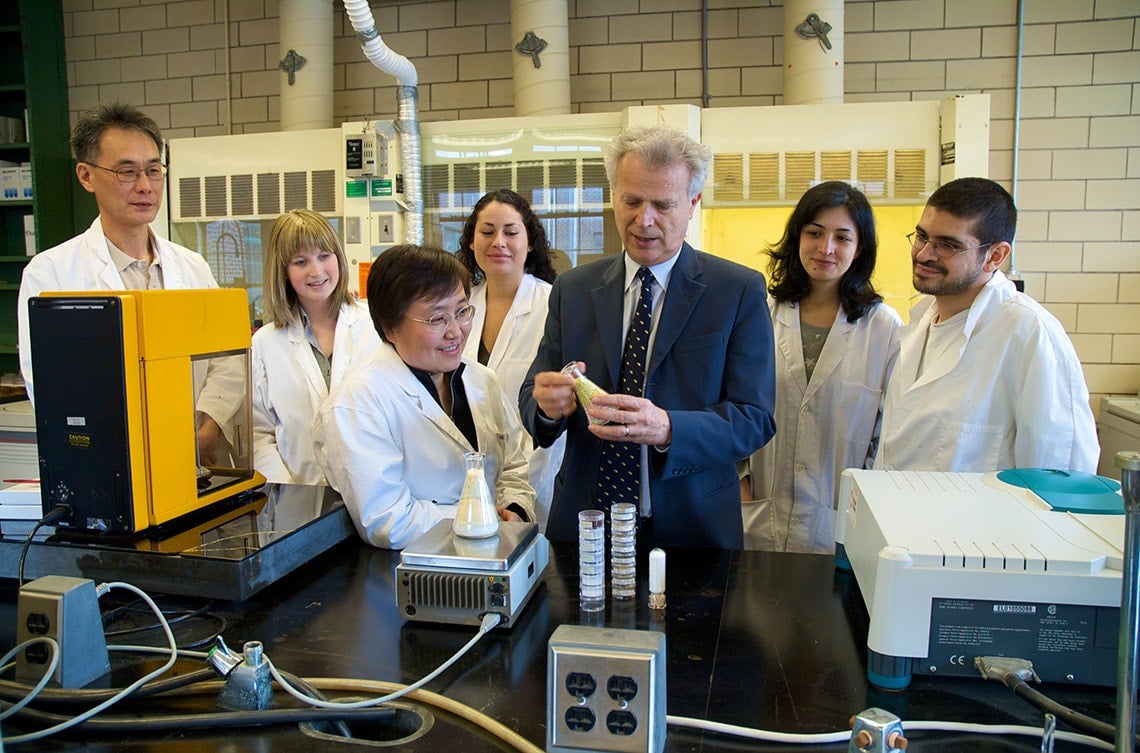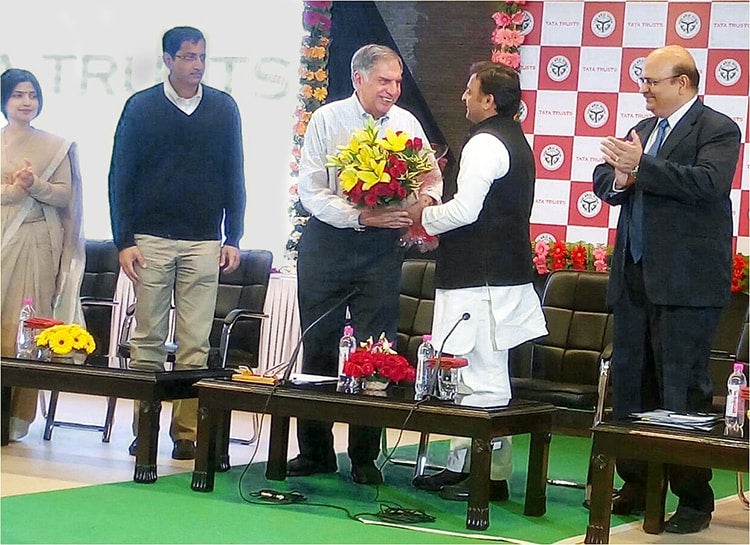
Double-fortified salt – developed at U of T to add more iron and iodine to the diets of those who don’t get enough – is now being distributed to 24 million people in the state of Uttar Pradesh in India.
The Tata Trusts, India’s largest charitable foundation, is supporting the state government to procure and distribute the product while the government of Uttar Pradesh is spending more than $40 million to purchase the salt and make it available to low income consumers at subsidized prices.
The Bill & Melinda Gates Foundation is funding a comprehensive evaluation of the effectiveness of the product in reducing iron and iodine deficiencies across the population.
“We’re very excited to see our invention being distributed on such a massive scale” says U of T professor Levente Diosady, who specializes in food engineering at the Faculty of Applied Science & Engineering. “The opportunity for engineers to make a difference in the lives of people living with malnutrition is incredible.”
More than twenty years ago, Diosady was approached by Venkatesh Mannar, then a senior advisor to UNICEF, who wanted him to do some simple chemical tests on formulations for double fortified salt.
Mannar’s mission was to address deficiencies in micronutrients, vitamins and minerals needed in small but regular amounts by the human body. Lack of these nutrients can reduce overall health with huge personal and economic impact worldwide.

Ratan Tata (centre, with flowers), chairman of Tata Trusts, is congratulated by the chief minister of Uttar Pradesh at the launch of the double-fortified salt distribution program (photo courtesy of the Micronutrient Initiative)
Perhaps the biggest success story in the micronutrient world is iodized salt. Many governments around the world have mandated the enrichment of salt – an inexpensive food item consumed regularly by all people – with iodine as a means to ensure that nutritional needs are met.
“Venkatesh was born into a salt-producing family, and he knew how well iodized salt was working in places where it had been tried,” says Diosady. “He wanted to see if we could do the same with iron.”
Iron deficiency leads to anemia, a condition that leaves people feeling tired and weak, making it harder to work or study. According to the World Health Organization, iron deficiency is currently the most common and widespread nutritional disorder in the world, affecting more than two billion people, and a major contributor to maternal mortality.
But Diosady’s tests showed why iron couldn’t be added to salt in the same way as iodine: the two elements reacted with each other, converting the iodine into a form that simply evaporated away.
Undeterred, Diosady and his team began developing a method for encapsulating the iron so that it wouldn’t react with the iodine. Eventually, they packaged ferrous fumarate, an iron-rich compound, into tiny edible particles that look and feel nearly identical to salt grains, and which dissolve when consumed. These particles enabled the iron to be mixed with iodized salt, resulting in a double-fortified product.
Soon after, Mannar joined the new Micronutrient Initiative as its president and continued to work with U of T food engineers on programs that proved the acceptability, safety and effectiveness of the double-fortified salt. The results of early trials showed a significant reduction in rates of anemia among children who received the product as part of their school meals.
Today, double-fortified salt produced in the Indian state of Tamil Nadu is being added to school lunches provided to more than five million children in the state through a program supported by the Canadian International Development Agency.
The expansion of the project to the state of Uttar Pradesh was a much larger undertaking, requiring even further scale-up of manufacturing.
U of T Engineering, through a grant agreement from Canada’s International Development Research Centre, is supporting the transfer of technology to India and scale up and roll out of the product to 4.6 million families in Uttar Pradesh. Diosady and Mannar, who is now an adjunct professor at U of T, are co-investigators on the project.
“When we started, we were producing 100 grams at a time in the lab,” says Diosady. “The first order from Uttar Pradesh for the month of January 2017 alone is for 6,000 tonnes.”
Meanwhile, Diosady and his team have continued their research.
They are developing ways to encapsulate other micronutrients, such as folic acid and vitamin B12, with the hopes of making a quadruple-fortified salt. They are also working on adding iron to tea.
“Tea, like salt, is widely consumed in predictable amounts in India and South Asia” says Diosady. “If we can get an iron-fortified tea into the hands of every tea-seller, there is the potential for a very beneficial health effect.”

